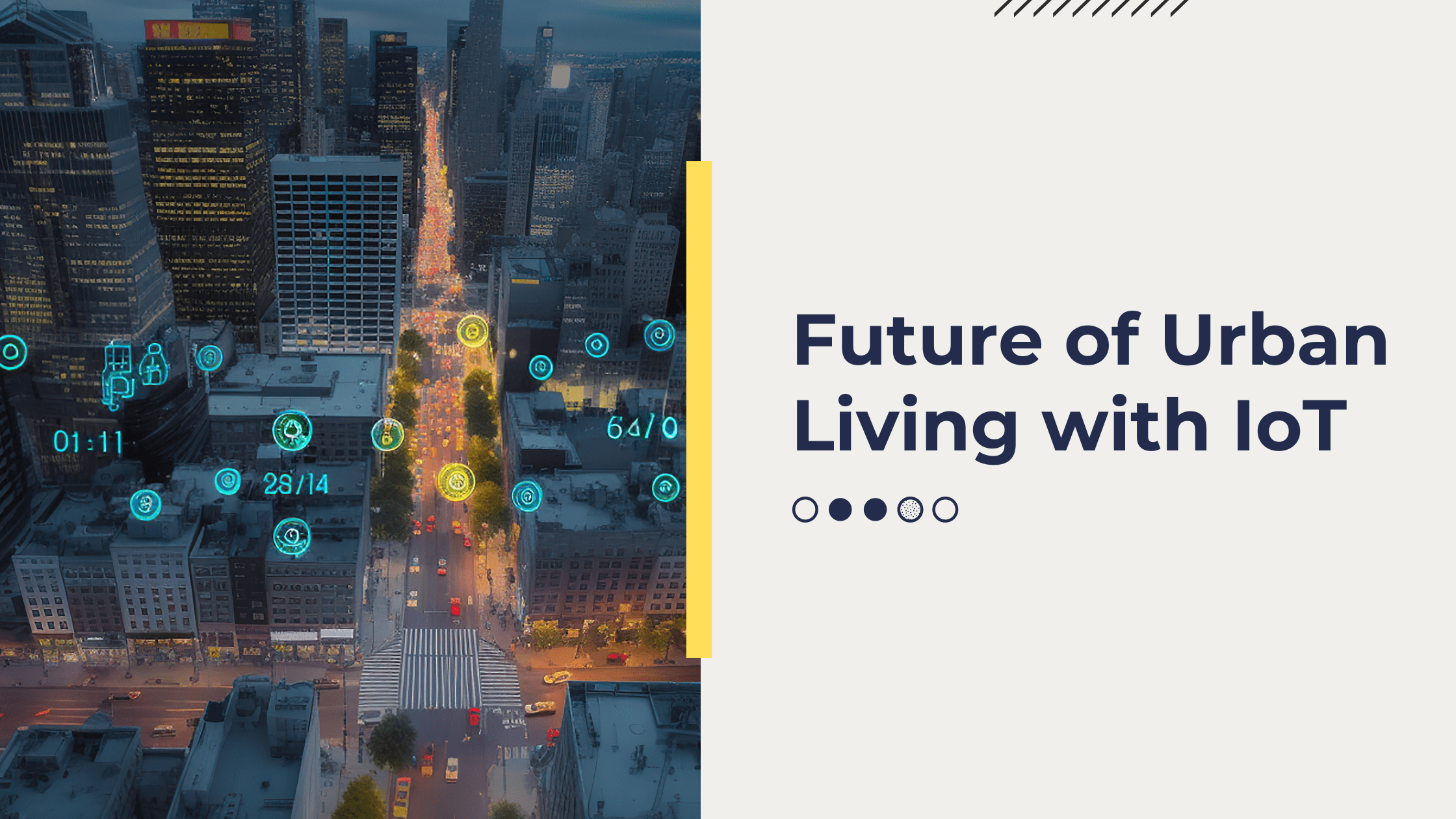March 14th, 2024
Category: IoT
No Comments
Posted by: Team TA

As urbanization and populations grow, more cities are embracing advanced networks and technology to manage resource restrictions. IoT in smart cities have grown in popularity as a result. IoT has entirely changed urban living in smart cities by allowing for more sustainable and efficient urban environments. It involves integrating connections, sensors, and actuators into various items to enable them to interact and communicate with one another online. By utilizing this technology, smart cities can optimize resource utilization and infrastructure management while simultaneously improving the quality of life for their residents.
What is a Smart City?
Smart cities are becoming more and more popular worldwide, with over two-thirds of cities investing in the latest technologies. A smart city utilizes innovative technology, such as an extensive network of sensors and networked devices, to collect data in real time and improve the effectiveness of public services while conserving funds and resources. These cities come in different forms, but they are mainly characterized by one or more of the following initiatives: intelligent transportation, smart healthcare, smart buildings, smart public safety, smart energy grids, and meters, smart governance, and environmentally friendly policies.
However, a smart city is not a single entity; rather, it is a combination of different smart solutions integrated to enhance the quality of life in that city. These smart cities are typically built through partnerships between the public and private sectors.
Role of IoT in Smart Cities
1. Enhancing Efficiency in City Operations
IoT revolutionizes smart cities by enhancing efficiency in key operations like energy, traffic, and waste management. Through IoT-enabled smart energy systems, cities can dynamically adjust energy usage based on demand, integrate renewable sources, and reduce costs.
For instance, Barcelona employs IoT to monitor energy consumption in public buildings, leading to significant savings. Traffic congestion is tackled with IoT sensors that optimize signal timings and guide drivers to available parking spots, exemplified by Singapore’s use of smart traffic lights and parking availability apps. Additionally, IoT streamlines waste management by monitoring fill levels in bins, enabling proactive collection routes. Amsterdam’s smart waste collection bins exemplify this, reducing operational costs and promoting recycling.
2. Improving Public Services
In healthcare, IoT devices such as wearable monitors and remote patient monitoring systems enable real-time health data tracking, leading to proactive patient care and improved treatment outcomes.
For instance, in Milton Keynes, UK, IoT-powered telehealth solutions have reduced emergency hospital admissions by 38%. Education benefits from IoT-enabled smart classrooms equipped with interactive whiteboards and personalized learning tools, enhancing student engagement and academic performance. Public safety is bolstered by IoT-driven surveillance cameras, gunshot detection systems, and emergency response platforms, which enable rapid incident detection and response.
For example, in Chicago, IoT-enabled predictive policing strategies have contributed to a 33% reduction in shootings. Overall, IoT in smart cities transforms public services by leveraging data-driven insights to optimize resource allocation, improve service delivery, and enhance citizen well-being.
3. Transportation Revolution
Smart traffic management solutions are used to optimize traffic lights and prevent roadways from becoming too congested, based on the time of day or rush hour schedules. According to CTIA’s Smart Cities Playbook, these systems have the potential to reduce congestion by up to 40%, which could save approximately $100 million annually.
The introduction of connected vehicles has revolutionized public transit, and it is predicted that by 2035, 97% of US-registered vehicles will be connected, as reported by Insider Intelligence. Drivers find the voice search and location data capabilities of these systems attractive, and as smart applications continue to evolve, the adoption of smart transit is expected to increase, leading to a smarter and more efficient transportation system.
4. Enhancing Safety and Security
IoT plays a pivotal role in bolstering safety and security within smart cities through advanced surveillance and monitoring systems, emergency response mechanisms, and proactive crime prevention measures. Surveillance cameras equipped with IoT sensors enable real-time monitoring of public spaces, enhancing situational awareness and deterring criminal activities.
For instance, in London, the use of IoT-enabled CCTV cameras has contributed to a 21% decrease in crime rates. Additionally, IoT-powered emergency response systems leverage data analytics and geolocation technology to expedite emergency services dispatch and optimize response routes, significantly reducing response times.
5. Improving Quality of Life
Smart homes and buildings equipped with IoT devices enable automation and remote control of various household functions, such as lighting, heating, and security systems, leading to increased convenience, comfort, and energy efficiency.
For example, IoT-enabled smart thermostats like Nest have been shown to reduce heating and cooling costs by up to 15%. Moreover, IoT enhances access to public amenities by providing real-time information and optimizing resource allocation. Smart parking systems, for instance, guide drivers to available parking spots, reducing congestion and enhancing convenience.
Additionally, IoT facilitates health and well-being initiatives through wearable devices, remote monitoring systems, and telehealth services, enabling proactive healthcare management and improving access to medical services, particularly in underserved areas.
6. Fostering Sustainability
Smart cities prioritize sustainability through reduced energy consumption, increased use of renewable energy, and waste minimization, aiding in climate change mitigation and urban resilience. IoT supports these efforts by promoting sustainable practices like energy conservation, waste reduction, and eco-friendly transportation.
Additionally, IoT enables cities to monitor and manage environmental factors such as air quality, water usage, and waste generation, empowering targeted interventions to combat pollution and enhance environmental quality.
Wrapping Up
IoT aids governments in efficiently managing transport, infrastructure, and public services, resulting in safer, greener cities with reduced energy consumption. With IoT capabilities driving these initiatives, their growth will accelerate.
As cities worldwide embrace IoT, citizens and municipalities will reap its benefits. As an IoT app development company, Travancore Analytics offers comprehensive solutions for smart city initiatives, leveraging IoT’s connectivity, security, and open data to enhance the urban experience for all stakeholders.